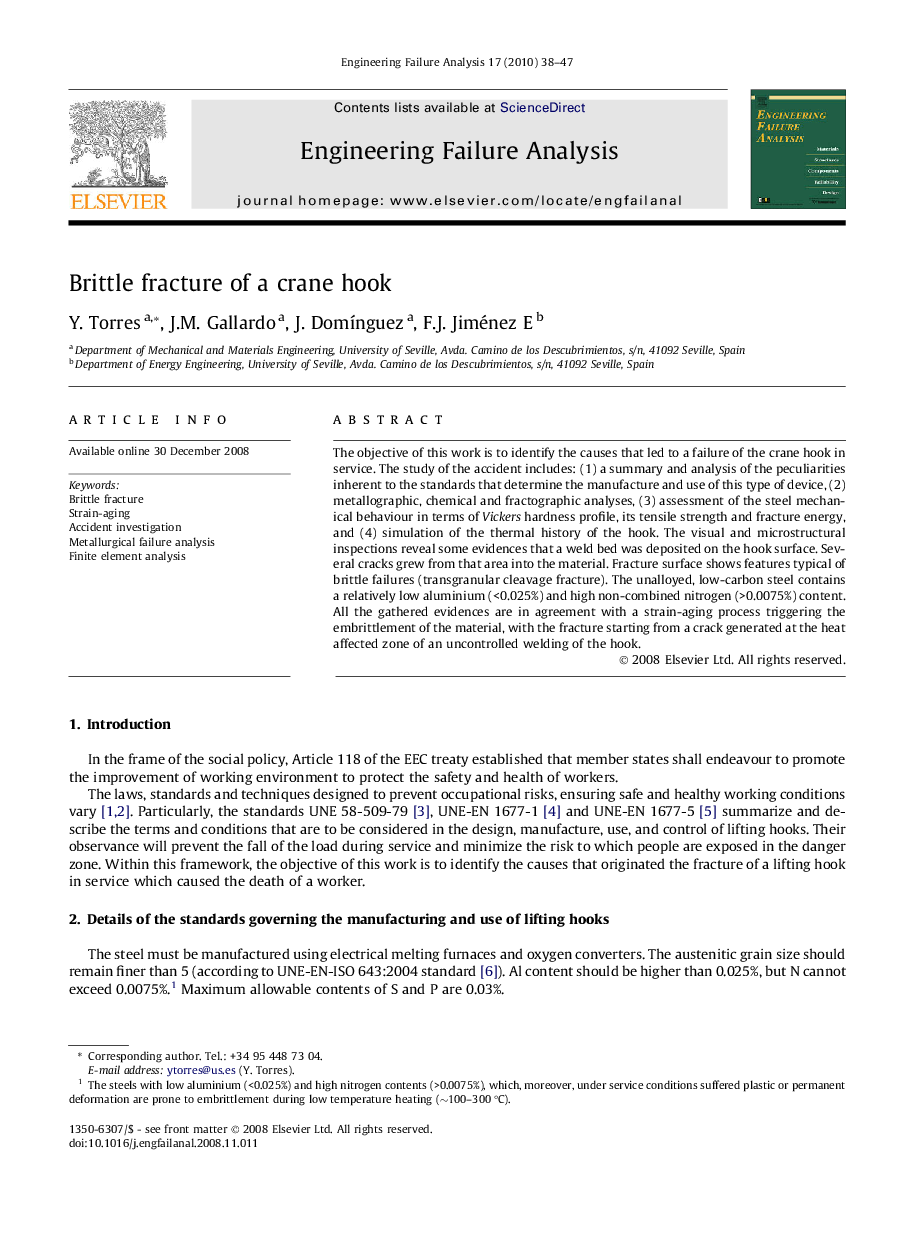| کد مقاله | کد نشریه | سال انتشار | مقاله انگلیسی | نسخه تمام متن |
|---|---|---|---|---|
| 769058 | 897370 | 2010 | 10 صفحه PDF | دانلود رایگان |

The objective of this work is to identify the causes that led to a failure of the crane hook in service. The study of the accident includes: (1) a summary and analysis of the peculiarities inherent to the standards that determine the manufacture and use of this type of device, (2) metallographic, chemical and fractographic analyses, (3) assessment of the steel mechanical behaviour in terms of Vickers hardness profile, its tensile strength and fracture energy, and (4) simulation of the thermal history of the hook. The visual and microstructural inspections reveal some evidences that a weld bed was deposited on the hook surface. Several cracks grew from that area into the material. Fracture surface shows features typical of brittle failures (transgranular cleavage fracture). The unalloyed, low-carbon steel contains a relatively low aluminium (<0.025%) and high non-combined nitrogen (>0.0075%) content. All the gathered evidences are in agreement with a strain-aging process triggering the embrittlement of the material, with the fracture starting from a crack generated at the heat affected zone of an uncontrolled welding of the hook.
Journal: Engineering Failure Analysis - Volume 17, Issue 1, January 2010, Pages 38–47